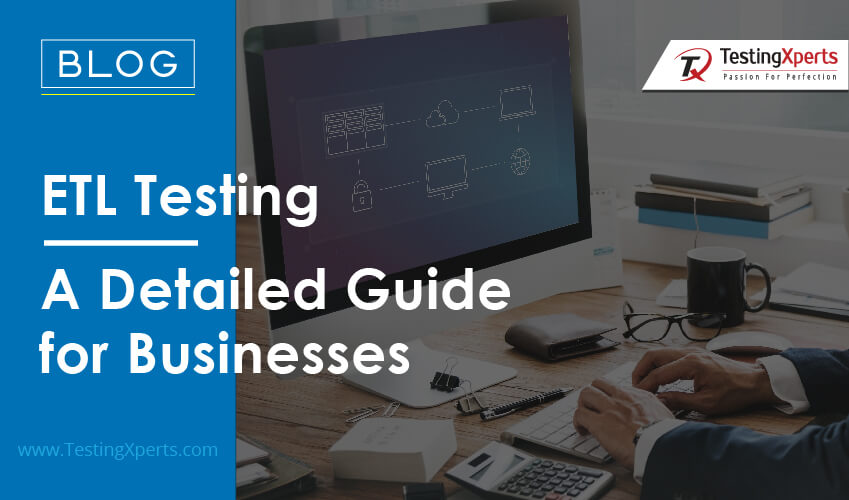
- Data Validation Testing in ETL
- Data Validation Vs. Data Quality
- Data Validation Testing Stages in ETL
- Data Validation Challenges and Solutions
- Why Choose Tx for Data Validation Testing Services?
- Summary
In today’s tech-centric world, everything depends upon data quality. Businesses rely heavily on accurate, consistent, and timely data to drive insights and facilitate decision-making. Large data volumes travel across systems during the ETL (extract, transform, load) process, and the slightest error can compromise their quality and integrity. That’s where data validation testing steps in. It is critical to ensure ETL workflows deliver quality and trustworthy data.
This blog will explore why data validation testing is crucial, how it differs from data quality checks, and how Tx can assist in getting it done right.
Data Validation Testing in ETL
Data validation analyzes the data’s accuracy and reliability before utilization, importing, and processing. It helps businesses ensure that the information they will use is clean, accurate, and reliable for decision-making and achieving their goals. Its types include:
- Data integrity testing
- Data migration testing
- Data uniqueness testing
- Data consistency testing, etc.
Data validation becomes even more significant in the context of ETL. It checks the quality and accuracy of data before and after extraction, transformation, and loading. Data validation testing ensures the extracted data is correctly transformed and loaded from source to destination. Teams can verify the data completeness, consistency, and accuracy at every pipeline stage. For businesses, faulty and incomplete data could result in flawed analytics, compliance risks, and lost revenue. By implementing data validation testing in ETL workflows, businesses can:
- Decision-makers can rely on reports and dashboards powered by validated, high-integrity data.
- Early detection of data issues reduces manual checks, rework, and troubleshooting time.
- Regulatory standards like GDPR and HIPAA require accurate and auditable data flows.
- Clean and validated data forms a strong base for AI/ML initiatives and predictive analytics.
- Personalization and support improve significantly when customer-facing systems rely on accurate data.
Data Validation Vs. Data Quality
|
Aspect |
Data Validation |
Data Quality |
|
What does It mean? |
Ensures data meets expected format, constraints, and rules. |
Measures overall data accuracy, completeness, and reliability. |
|
Purpose |
To ensure data is correct at a specific point in the process. |
To ensure long-term usability and trustworthiness of data. |
|
When It Happens |
During data entry or within ETL workflows. |
Continuously across the data lifecycle. |
|
Focus Areas |
Format checks, null values, field lengths, and data type matches. |
Accuracy, completeness, consistency, timeliness, and uniqueness. |
|
Scope |
Usually transactional or dataset specific. |
Broader and organization wide. |
|
Tools Involved |
ETL tools, validation scripts, and rule engines. |
Data profiling, cleansing, monitoring, and governance tools. |
|
Business Impact |
Prevents immediate issues during data processing or migration. |
Ensures trustworthy analytics, decisions, and compliance. |
|
Responsibility |
Often handled by DevOps or ETL engineers. |
Shared across data stewards, analytics, and business units. |
Data Validation Testing Stages in ETL
Data validation is not a one-time task. It’s a continuous process integrated within the ETL pipeline. Let’s take a closer look at the key stages where validation plays a critical role:
- Pre-ETL Validation: Before extracting data, it is necessary to validate the integrity of the source data. It helps catch issues early to prevent faulty data from damaging the rest of the pipeline. This stage involves:
- Checking for missing or null values
- Verifying data types and formats
- Ensuring primary and foreign key constraints are intact
- Identifying duplicates or corrupt entries
- Post-Extraction Validation: This stage ensures that what’s pulled is accurate and intact before the transformation begins. After extracting data from the source, the second check confirms:
- The correct number of rows and records were extracted
- Field-level data consistency with source
- No truncation or encoding errors during extraction
Transformation Validation: Flawed transformation can result in misleading insights and reporting errors. After cleaning, enriching, and converting the data into new formats, teams must:
- Validate the logic applied (for example, aggregation, conversions, etc.)
- Check for expected values post-transformation
- Ensure business rules are applied correctly
Pre-Load Validation: The next stage is to prevent loading incorrect or misaligned data that can break downstream systems. Before loading into the destination system, enterprises must validate:
- Field mappings between source and target
- Schema alignment with destination tables
- Referential integrity and constraints
Post-Load Validation: The last stage is to confirm E2E accuracy and ensure data is ready for use in analytics and business decision-making. After loading, the final check would include:
- Row counts and data integrity between source and target
- Spot checks for critical business KPIs or high-impact fields
- Validation against reports or dashboards (if applicable)
Data Validation Challenges and Solutions
|
Challenge |
Solution |
|
Handling Large Data Volumes |
Adopt scalable, cloud-native validation tools to process large datasets without compromising performance. |
|
Identifying Subtle Data Inconsistencies |
Implement advanced rule-based and pattern-matching logic to detect mismatched values, duplicates, and irregular patterns in the pipeline. |
|
Maintaining Validation Across Data Sources |
Create a unified validation framework that applies consistent checks across structured and unstructured sources, reducing fragmentation. |
|
Time-Constraint Due to Manual Validation |
Automate repetitive validation tasks using ETL scripts or data validation platforms to save time and reduce human errors. |
|
Ensuring Data Privacy |
Apply data masking, encryption, or tokenization techniques during validation to protect personal information and ensure compliance with data regulations. |
|
Error Detection and Handling |
Build robust error-handling mechanisms with automated alerts, retries, and fallback workflows to ensure minimal disruption during validation failures. |
Why Choose Tx for Data Validation Testing Services?
Enterprises relying heavily on data to strategize their decision-making require a robust testing strategy to streamline their ETL process. Tx offers custom data validation testing solutions to analyze data integrity and quality. We assist our clients in leveraging their data optimally by identifying and rectifying errors and anomalies. Our services ensure accurate, consistent, complete data across your databases and sources. We ensure that your data transformation, integration, and migration are aligned with your business objectives.
Our data testing experts assess and validate the quality of your data by examining it for inaccuracies, missing values, and duplicates. This ensures that your data is reliable and trustworthy for analytics and decision-making. Partnering with Tx will ensure you always meet your business requirements with clear, actionable insights.
Summary
Data validation testing plays a critical role in ensuring data accuracy, completeness, and reliability throughout the ETL process. It helps businesses avoid costly errors, meet compliance standards, and make confident, data-driven decisions. Tx enables end-to-end validation with scalable, secure, customized testing solutions tailored to business needs. To know how Tx can help you with data testing, contact our experts now.
Discover more
Get in Touch
Stay Updated
Subscribe for more info




